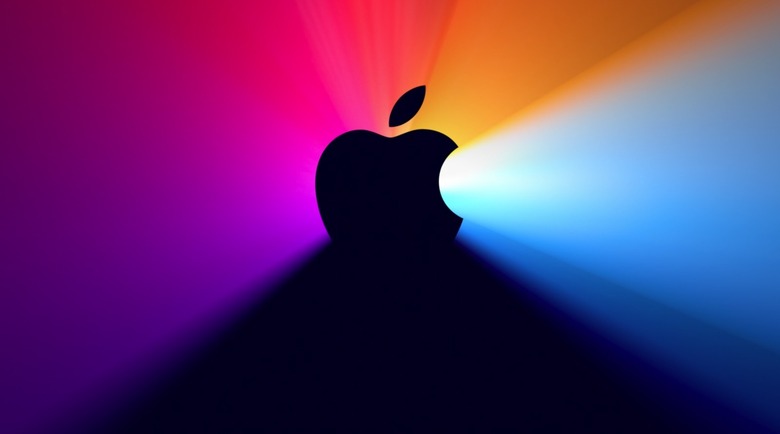Apple Rumored AR Headset May Feature Three Displays
A new research report from analyst Ross Young, who covers the display industry, sheds some new light on Apple's somewhat mythical, intriguing, and long-rumored AR/VR headset. According to Young, Apple's headset will arrive later this year and will feature three displays. Young specifically states that the headset will feature two Micro OLED displays and a single AMOLED panel. Naturally, everything is speculative at this point, but Young postulates that the AMOLED panel may be used for a lower-resolution peripheral display.
"We can expect the Apple headset to cost several thousand dollars," Young's whitepaper reads. "Our assumption is that the first-generation headset will be a high-end device targeted at professionals and developers to expand Apple's ecosystem in AR/VR." This is an interesting and curious take given that Apple has long been a company that doesn't exclusively focus on professional consumers. On a related note, we've seen rumblings pointing to a price tag in the $3,000 range.
Apple's mixed-reality headset - what we know
We've seen so many reports regarding Apple's rumored headset that it's sometimes challenging to make sense of it all. That said, it's worth highlighting an investor note from Ming-Chi Kuo, often regarded as the most accurate Apple analyst.
According to Kuo, Apple's headset will boast 15 camera modules. Together, these cameras will provide users with an immersive AR environment capable of passing video from the outside world to the user. Kuo adds that the device will be lightweight enough to be portable, but not truly mobile like an iPad or iPhone. Back in March, Kuo said that headset prototypes weighed about 2/3 of a pound. Assuming Kuo's statement is accurate, it stands to reason that the shipping version will weigh a little bit less. Recall, some early iPod and iPhone prototypes were much heftier than the first-generation products.
Other rumors we've seen claim that the device's Micro OLED display will have a resolution of 3,000 PPI. What's more, the headset will likely house an extensive array of sensors. These sensors may enable features like eye-tracking, voice recognition, hand-tracking, spatial recognition, and more. There's also speculation the headset may integrate with standalone Apple services like Apple TV+ and Apple Arcade.
Kuo's recent note on Apple's AR/VR headset
Just a few weeks ago, Kuo issued a new investor note (obtained by MacRumors) detailing Apple's headset:
We predict that the structured light of the AR/MR headset can detect not only the position change of the user or other people's hand and object in front of the user's eyes but also the dynamic detail change of the hand (just like the iPhone's Face ID/structured light/Animoji can detect user's dynamic expression change). Capturing the details of hand movement can provide a more intuitive and vivid human-machine UI (for example, detecting the user's hand from a clenched fist to open and the balloon [image] in hand flying away).
What Apple's AR headset may look like
While headsets tend to be clunky, The Information a few months ago said they obtained images of a "late-stage prototype" of Apple's mixed-reality headset. The report says Apple's hardware consists of a "sleek, curved visor attached to the face by a mesh material and swappable headbands."
Renders of what Apple's headset might look like from designer Ian Zelbo are below:
Apple View – Seeing is believing.
See more 8K images on my redesigned website https://t.co/ToMRGEPuWu pic.twitter.com/gkLgUj92Np— Ian Zelbo (@ianzelbo) December 20, 2021
Incidentally, it's worth noting that Apple has reportedly been working on a mixed reality headset for years at this point. The group attached to the product is said to be in the hundreds. Notably, the group includes scores of employees that were brought in after various corporate acquisitions over the past few years.
Again, several credible sources claim Apple will release the headset later this year. On a related note, Apple is still reportedly working on a pair of AR glasses. Apple's AR glasses, however, may not arrive for another 2-3 years.
